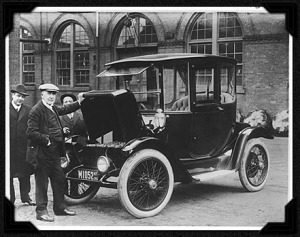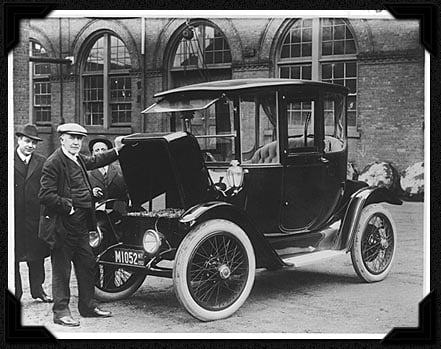So, I spotted this Nov. 14, 2019 “StreetsBlog USA” headline “Prominent Democratic presidential candidates have all put forward plans for clean energy, limiting drilling and subsidies for electric vehicles. Yet they have nothing to say about Americans’ addiction to driving – and if they don’t wean Americans off cars, they’ll never meet climate goals.”
A really profound thought, especially the “addiction to driving” part, which is one problem I thought autonomous motoring was supposed to help resolve. Another issue supposedly solved by AV (autonomous vehicles) is that of driving distracted, drunk or high (collectively known as “driving under the influence”) which deals with the safety aspect.
A real game-changer autonomous (driverless) motoring has the potential to be.
With emissions, the planet in mind
Meeting America’s climate goals could consist of among other things eliminating internal-combustion-engine-equipped motor vehicle use. Okay, so if all vehicles in the future run on electricity, why the need for driverless technology?
Upon arriving at that determination, then I got to thinking again about the part having to do with safety and how AV operation could result in a safer vehicle operating environment for all. So, there is much to like, apparently, about the combo: electric, autonomous motoring.

Somewhere else, meanwhile (though I cannot remember where I saw it) I read a headline about how, with electric vehicles, there is a need to replace batteries as batteries don’t last forever. And, as for the spent batteries, if these cannot be adequately and properly disposed of, this could possibly lead to another problem, that of introducing toxic chemicals and pollutants into the environment which includes air, water and soils. And, replacing batteries used in this way isn’t cheap. Recycling is a possibility if it can be done economically and without harming the environment and life.
And, if not, then electric vehicle operation may not prove to be the game-changer on the climate-change front that many people might think it is or could be.
Which brings us back to the notion of AV use whether satisfied using a mix of both internal combustion and electric vehicles or internal-combustion-engine-equipped motor vehicles exclusively.
Now I know one of the AV operating characteristics that proponents are really excited about is this idea of platooning, otherwise known as fleeting or caravanning of vehicles in bunches all moving seemingly as a group in complete concert with each other down the highway with such traveling at speeds as fast as 200 miles per hour perhaps? (Disclosure: Believe me; it’s been suggested). Can you imagine the condition the roadway designed to permit this high a speed would need to be in? And, depending on the road condition, the AVs would need to automatically respond appropriately to such.
This tells me that under an AV operating scenario, speed would need to be regulated, this, again, having to do with safety. Of course, the way I see motoring generally, the built environment is continuously changing affected by time-of-day, weather and other factors.
With this in mind, so that the greatest efficiencies can be realized, what would be important, useful, and helpful, especially in city-based highway motoring circumstances, vehicles themselves would need to be able to recognize changing conditions and make adjustments (correct for these) accordingly.
And, something else. With autonomous motoring there is always the potential for more roadway activity which means the possibility that motoring could become even more constrained than what it is presently. It is not uncommon for today’s motorists to lose up to two work weeks-worth of time stopped by traffic. So many times I have read how increasing the amount of pavement will aid in alleviating said congestion. If that were truly the answer, the solution would be right under out feet – to keep adding concrete.
Maybe the real focus should be on what will result in making our transportation network the most efficient, the most safe and most environmentally responsible. And, thinking in bigger-picture terms, we just might want to add to this list the most seamless. That means all modes articulating very well with each other. And, when I say all modes, I do mean all and that includes the active transportation options utilizing the feet and bikes.
Small scale, big presence
The village of Las Colinas, Texas is truly a work of art. I paid a visit in 2012.
Though a bit hard to find (at least it was that way for me), Las Colinas, however, is not off the beaten path. In fact, quite the contrary. It is a viable part of Irving (a Dallas-area city).

– Alan Kandel

